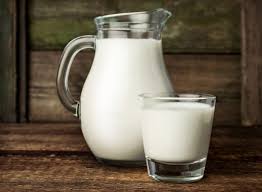Di Giacomo Mario Menegola
Cheese is one of the most important foods in human History, as it helped us gain more control onto our alimentation and resource usage. Its story goes way back in time, so much that cheese’s invention has no certain evidence in known History. However, the period in which this invention can most likely be collocated is the late Prehistory.
Thousands and thousands of years ago, says the legend, a shepherd put some milk in a sheep stomach to carry it around; he didn’t wash the stomach properly, so there was still some rennet in it, and the milk started coagulating: when the shepherd extracted it from its container, the milk had transformed in what we would now call curd. The shepherd tasted that strange milk jelly and he liked it so much that he kept producing it and spread the voice about how to create that wonderful new food.
Fast forward, some centuries later the production of cheese had been established all around the Mediterranean. The first evidence of cheese production dates back to the 3rd millennium BCE, in Mesopotamia, where ancient texts give us information about the vast knowledge of this matter the Sumerians had. In the next few centuries this knowledge penetrated in Europe through Greece and Italy and spread all over the continent.
Cheese production was really important for the sustenance of most of the population around the Mediterranean, in Europe and in the Middle East and, when Europeans colonized the Americas, it was brought there, too. This enormous spread of cheese production resulted in a huge variety of types of cheese, but the cheese making process is about the same for every kind of cheese.
It begins by heating the milk to the temperature needed, which is specific to the type of cheese, and adding rennet, an enzyme extracted from the stomach of lambs, kids or calves, and (if necessary) ferments to begin the curdling process. When this is completed and the milk is separated in curd and whey, the curd gets cut into pieces, the size of which determines the type of cheese: if the pieces are big (like a walnut), the cheese will be soft; if they’re of medium size (like an olive), the cheese will be semi-hard; if they’re small (like a grain of rice), the cheese will be hard. Sometimes these small curd pieces are heated again to force more whey out and thus drain them more.
After the curd has been cut, the pieces are either further processed to make special kinds of cheese (like mozzarella or cheddar) or are just pressed into molds or forms to be further dried and achieve their final shape. They are then put in a controlled environment for the ripening process, the aging process of cheese, which is different from cheese to cheese and can last from a few weeks to several years, this helps texture and flavour to improve. Sometimes, as with blue cheeses, more and specific bacteria or molds are added to cheese in order to change texture and flavour.
Cheese making is one of the most ancient food making methods and the fact that, with improvement of course, it has survived all through History up to now gives enough evidence of its importance to us. Also, cheese is actually pretty awesome in its own ways: it’s good for storage because it’s solid, unlike milk, and the curdling and ripening process eats away a big portion of the lactose present in milk, so it’s more digestible. In conclusion, cheese is tasty and actually good, and that’s why so many of us like it so much
